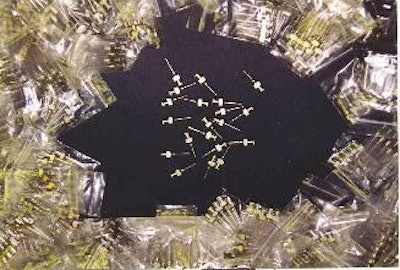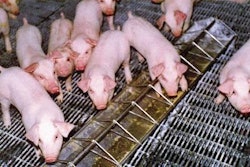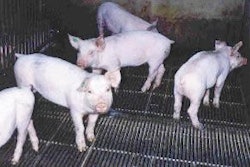
No wonder the post-weaning multisystemic wasting syndrome PMWS will rate its own sessions at the next International Pig Veterinary Society congress. Besides breaking out in places that had previously stayed free, such as parts of New Zealand, the disease has hit the headlines again by causing serious problems of high mortality on pig units in Canada and the USA. Actions against it are also making news, not least a co-ordinated international research effort and the first reports back from testing of vaccines in the field.
Indications of vaccine products reaching an advanced stage of development had been described to the IPVS held in Germany in 2004. As Pig International reported at the time, at least 2 potentially commercial vaccines were being developed and one of them was due to begin pre-marketing registration within the following 12 months. Additionally, opposing views were emerging over the right target for vaccination. Some experts favoured vaccinating the sow, whereas others thought a vaccine should be given directly to young pigs.
The argument for sow vaccination against PMWS remains that this should supply the earliest possible protection to piglets from an infection of the PCV2 circovirus considered responsible for the syndrome. This view has won most support where troubles with the syndrome have been in the acute phase. Typically, the virus has infected a herd in which the sows carry few protective antibodies and therefore it can cause extreme damage to weaned litters. An initial post-weaning mortality rate as high as 35% has not been unusual, even if this drops back later towards 10% as immunity builds and possibly falls again to 5% when strict hygiene precautions are applied.
Even if filling sows with vaccine succeeds in reducing acute 30%-plus death losses, however, doubts are expressed over its ability to contend with a situation of chronic infection among weaned pigs. What is more, fingers are pointed to signs that PMWS is changing its face and becoming a killer more in the grow-finish stage of production than in the nursery. Increases in mortality starting at about 12 weeks are being described instead of the original picture of outbreaks around the time of weaning.
Such a slip back to hitting at a later age would not surprise veterinarians because something similar has been seen for other pathogens, due to a combination of immunity-building measures and delayed challenges. An altered pattern for PMWS is said to give extra support for vaccinating the piglets rather than the sow and therefore starting their lifetime cover when they will really need it.
In the final analysis, both types of application will probably be needed, say veterinary specialists today. Direct vaccination of piglets could emerge as the choice for chronically infected units, whereas vaccinating the sow seems the more likely option for acute-phase situations of the sort seen currently in North America. More guidance on the right routes is anticipated from the results of the ongoing field trials. As of today, 4 companies have vaccines under test. Provisional licences for trying PMWS vaccination have been granted in France and Germany while Canada has given preliminary approval for one product. Inside information suggests that IPVS 2006 will hear highly encouraging reports about the trial work done so far. One source has said privately that the early results have "looked fabulous". PIGI

















